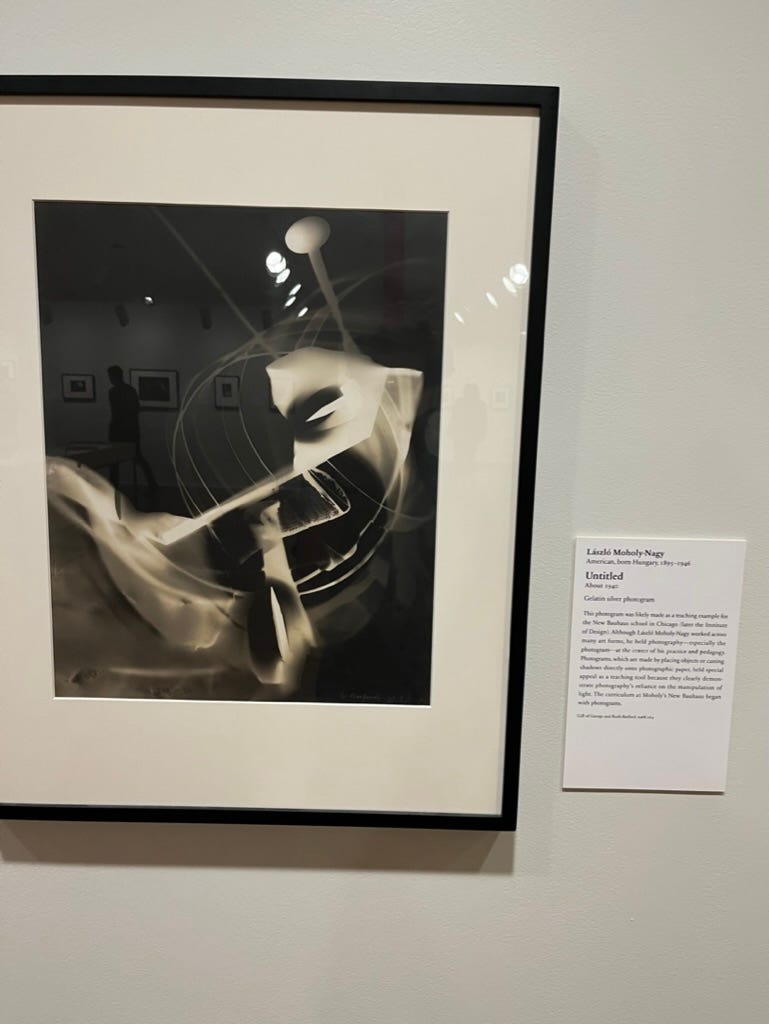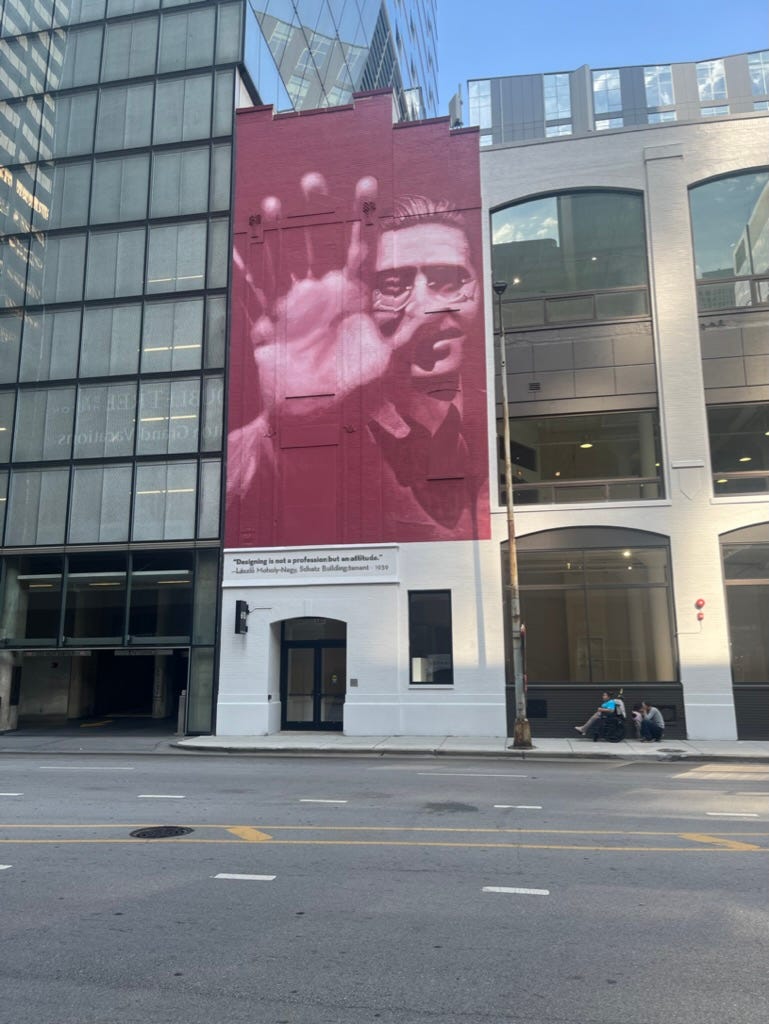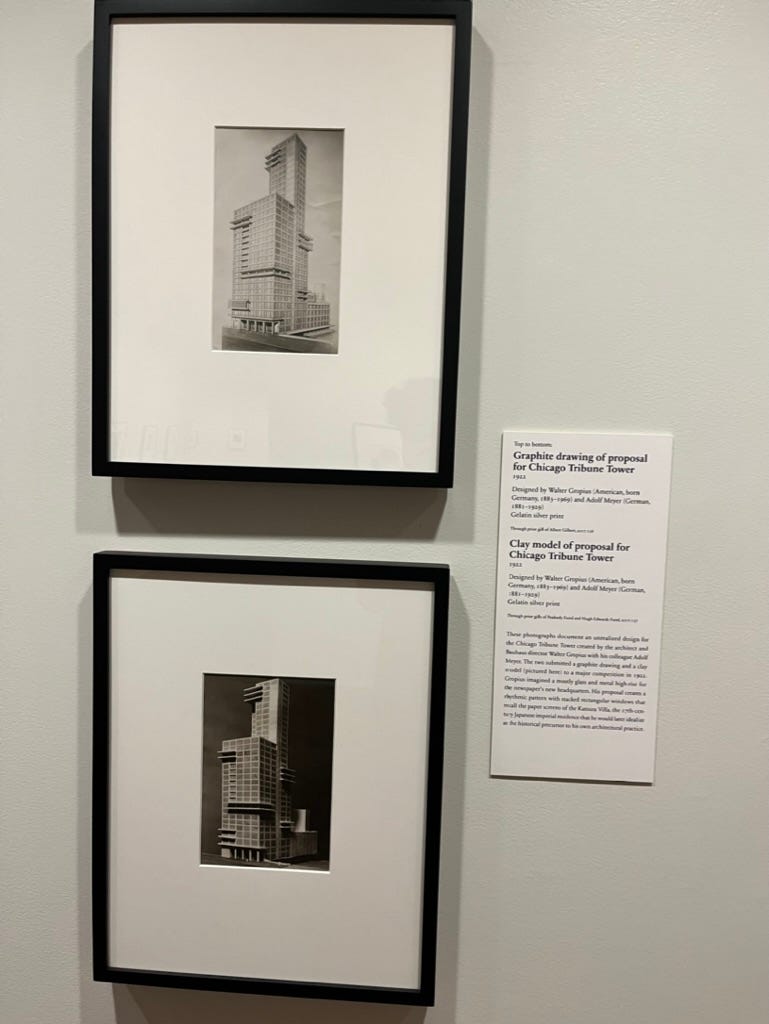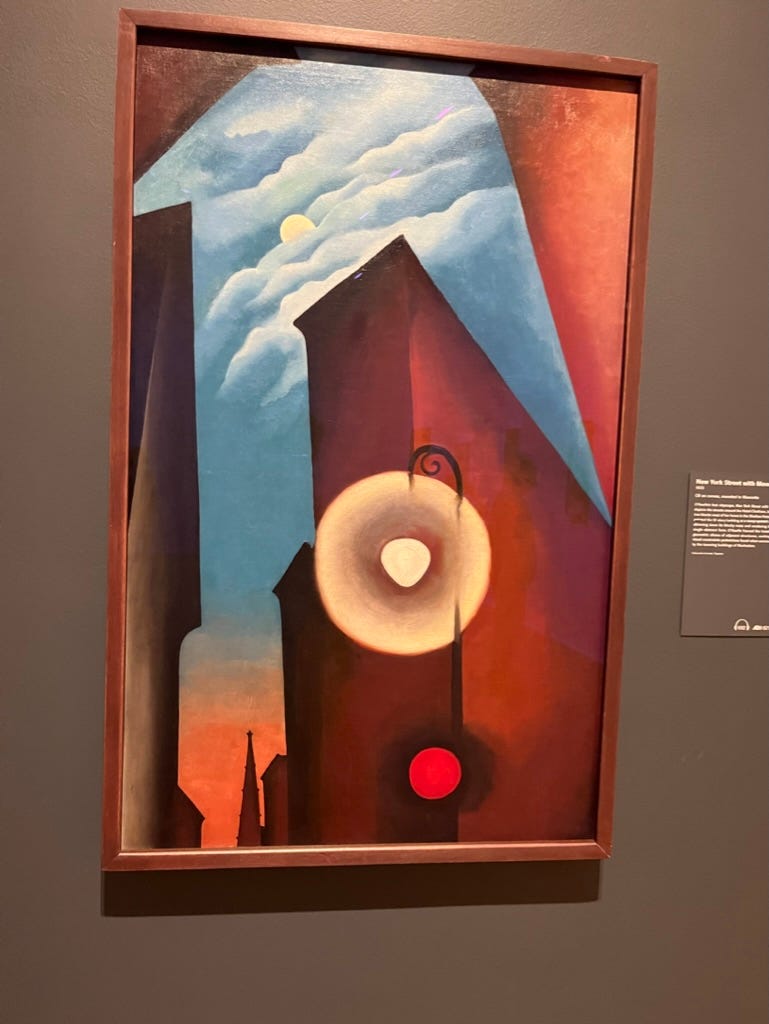Bauhaus in Chicago and O'Keeffe in New York
2 exhibits at the Art Institute
Short updates:
Thalia Hall is one of the great live music venues in Chicago, with a new restaurant that is supposed to be great. There are so many shows I’d go to, but I don’t know how realistic a live concert is until next year, when the newborn (ETA October) is not so newborn. Shows I’m most interested in: 10/14 Hania Rani, 10/29 Ebo Taylor, 11/15 La Femme, 12/14 Neal Francis with Liam Kazar. I’ll see if I can make it to one.
Another show I’m unlikely to be able to go to is Pearl & The Oysters opening for Ginger Root at The Salt Shed, a.k.a. the famous (former) Morton Salt facility, on 10/10. They might be my favorite band that I haven’t seen. Amazingly or not so amazingly, the Salt Shed is run by the same people as Thalia Hall.
For the same reason, you’ll see me talking less about dinners here for a while.
I saw 2 exhibits at the Art Institute last month: one you probably know about if you’ve been in Chicago this summer, the other you probably don’t. Both are ending this month.
The one you probably don’t know about is called “Foreign Exchange: Photography between Chicago, Japan, and Germany, 1920–1960”. It’s in the photography space in the basement of the main wing.
Mid-20th century photography is truly not a big interest of mine, but the list of place names seemed crafted to get me in: Chicago (7+ years) is now the city I’ve spent the most time in the US, and Japan (~14 years) and Germany (6 weeks) are the non-US countries I’ve spent the most time in.
The exhibit mainly focuses on people associated with Bauhaus, a very influential German art school in the early 20th century1.
I knew that some of the many architectural gems in Chicago are modernist buildings designed by Ludwig Mies van der Rohe, that the street in front of the Museum of Contemporary Art is named after him, and that he was somehow associated with Bauhaus. All this is true, and Mies was actually the last Bauhaus director before the Nazis shut it down, but it turns out that the Bauhaus-Chicago connection runs deeper.
Bauhaus founder Walter Gropius had an entry in the 1922 competition for the design of the Tribune Tower. Gropius’s design is very different from the winner, which is the neo-Gothic building that is one of my favorite Chicago buildings2. On one hand, you can make the case that there are so many modernist, i.e. boxy, skyscrapers in Chicago by now that Gropius’s design wouldn’t stand out. One the other hand, you also see projecting balconies on his design that do seem to make it different from most of them.
The caption mentions that Gropius was inspired by the Katsura Villa, an imperial residence in Kyoto. I knew of the villa—if you haven’t noticed yet, this exhibit is a journey where I learn something new about things I sort of knew about—but I was entirely unaware that the villa was an inspiration for some modernist architects.

I kept seeing the name of László Moholy-Nagy in the exhibit. I had seen that name before, and it took me a while to figure out why. Then I remembered that there’s a mural of him on the east side of the building at 247 East Ontario Street.

The reason there is a mural of Moholy-Nagy is that he was a Bauhaus teacher who opened a school called The New Bauhaus in 1937, in Chicago (!), and 247 East Ontario is where the school was when he renamed it the Chicago School of Design in 1939. This school has since been absorbed into the Illinois Institute of Technology, whose main campus was designed by Mies.
One more (possibly basic) thing that I discovered while Googling about all this is that Ludwig Mies van der Rohe was born with the surname Mies, and he added the “van der Rohe” to seem like he had noble descent. He used the Dutch van der instead of the German von because the latter was legally regulated in Germany. It’s fascinating to think that this was a thing in the early 20th century.
The other show is “Georgia O’Keeffe: ‘My New Yorks’”. This is the big showcase exhibit for the Art Institute this summer. This was much less interesting factually—mostly because I’d seen enough O’Keeffes to absorb a bunch of facts about her3—and more interesting artistically, as you’d expect.
To spell out the background of this exhibit, she lived with her husband Alfred Stieglitz, a photographer and an art promoter, in Midtown Manhattan during the 1920s. While Stieglitz had a hand in making O’Keeffe famous, he also tended to focus on her curvy, “feminine” paintings of flowers and other natural objects that she’s still most famous for. He did not accept her paintings of New York City for one of his big gallery shows.
The exhibit succeeds at showing off this underappreciated side of O’Keeffe that painted skyscrapers and gaps between them.
As a city dweller and a city lover4, I’m always curious what artists get out of cities. In the case of Georgia O’Keeffe, most of what she paints are views of the city from her high rise apartment or views of high rises from street level. Strikingly absent are signs of human beings. Aside from far away vehicles, a glass dish on her window sill is about all we get.
I had always assumed that O’Keeffe’s New Mexico paintings were the way they were because she was painting the wilderness. Here we see her painting the biggest city in the world (then) as if it’s also the wilderness.
“Foreign Exchange” ends on 9/9, and “Georgie O’Keeffe” ends on 9/22.
What I’m listening to now
I want to congratulate and thank the Australian garage rock band Girl and Girl for a perfect song, “Hello”5. A song about mental illness and uncaring hospital bureaucracy has no right to be this fun. Somehow, the absurd musical reference at the end of the song—as in, a reference to a musical—seems inevitable.
Another highlight is “Oh Boy!”, which reminds me of some Parquet Courts songs. Girl and Girl’s drummer is the vocalist’s real-life aunt, and I think she’s pretty great even without that cute piece of trivia.
Considering how much I write about somewhat obscure music here, I have to clarify that I’m not talking about the British rock band, which is named after the school.
My current top 3 are the Chicago Board of Trade Building, the Tribune Tower, and the Carbide & Carbon Building.
O’Keeffe paintings are everywhere, but I’ve been to the Georgia O’Keeffe Museum in Santa Fe, and the Art Institute has a big collection (she studied at the School of the Art Institute of Chicago for a bit), as does the Milwaukee Art Museum (she’s from Wisconsin).
although not a New York frequenter. I’ve only spent one week there, for the 2014 US Go Congress.
A perfect song is like a perfect dish—you can’t improve on it without totally changing what the song is trying to accomplish. So there are many perfect songs, but not that many. By my count, Pet Sounds by the Beach Boys has 4 perfect songs (“Wouldn’t It Be Nice?”, “Don’t Talk (Put Your Head On My Shoulder)”, “Let’s Go Away for Awhile”, and “God Only Knows”), which is 4 more than most musicians have over their careers.
Perfect dishes seem to be much, much easier to make than perfect songs, and are made by many amateurs every day. There’s just not that many things a dish can do, compared to how many things can happen (and go ever-so-slightly wrong) during a song. For the same reason, it’s easier for a minimalist song to be perfect, e.g. “Blackbird” by the Beatles, than songs with more parts, longer songs, etc. It’s hard to imagine movies or TV shows being perfect in the way a song can be perfect.

